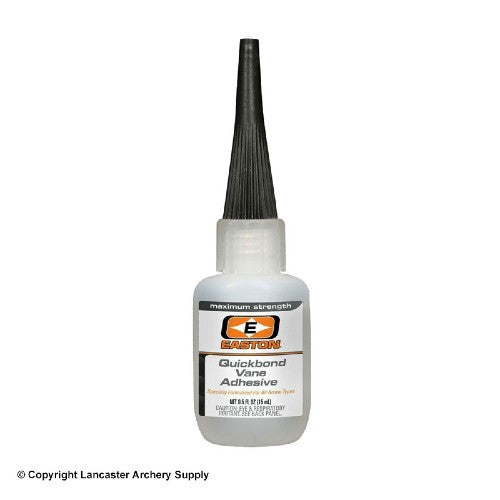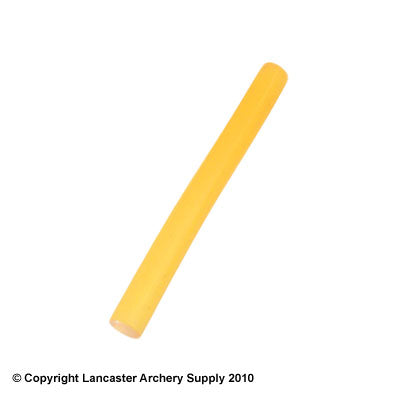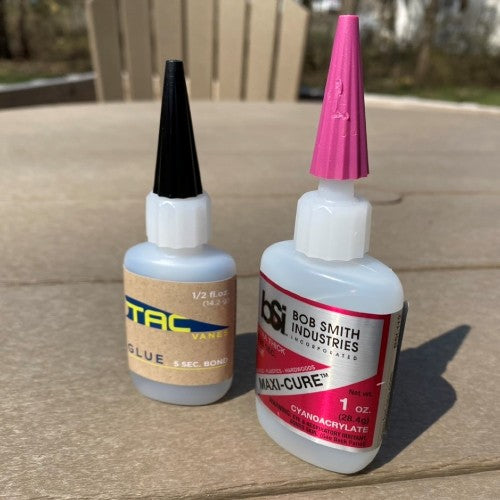Stick it, for the win!
Archery is a game that requires lots of glue.
We glue points, inserts and nock bushings inside arrowshafts. We glue vanes, feathers and certain nocks onto arrow shafts.
Sometimes you want bonds to be permanent. Sometimes, youwant to be able to separate parts later.
To get the right parts to stick the right way, you’ve got to know your archery glues.
CYANOACRYLATES
This is a family of fast-setting gels and liquid glues commonly used for fletchings, point inserts and sometimes nock bushings and nocks.

You’d use a cyanoacrylate for anything you want to stickpermanently and quickly. Let’s say you’re putting a point insert into a huntingarrow to receive screw-in field points and broadheads. You’d use a cyanoacrylatebecause these inserts typically are intended to be permanent.
Attaching fletchings to arrows is a common use forcyanoacrylates because the glue enables the fletchings to stick where you putthem very quickly. Pay attention to the type of cyanoacrylate you choose forfletching. Not all work equally well on both plastic vanes and feathers.Likewise, if you’re working with wood arrows, some of these glues work betteron wood than others.
HOT MELTS
These glues come in stick form. You apply a flame to the glue to melt it into whatever you want to stick to another surface.

Hot melts are great for products you might remove, such as points and nock bushings. Should the time come, you can heat the point or bushing, which will loosen the glue, and that component can then be easily removed.
Understand, however, that you should never subject carbon to high heat, like an open flame. That will cause the carbon to crack.
Another method for softening hot melt that's already holding components in place is to use hot water. Let's say you want to remove a point that's glued in place inside a carbon arrow. Submerge the arrow end into a pot of hot water for a few seconds, and the glue will soften so you can remove the point with a pair of pliers. (Don't use your hands or you'll burn them.)
This is a safe way to remove components from carbon arrows without damaging the carbon.
COLD MELT
Cold melt glues also come in stick form, and are applied by heating them. They require less heat than hot melts to liquify the glue, however.

Cold melts are great for gluing components where you don’twant to use high heat – such as anything being inserted into a carbon arrowshaft. The lower melting temperature required to liquify these glues minimizesthe risk of damaging carbon.
They’re great for nock bushings, since these bushings sit soclose to arrow shafts. So let’s say you want to remove a bushing. You’ll haveto heat it to liquify the glue holding it in place. Since the bushing is soclose to the shaft, if it were held in place with hot melt, the amount of heatrequired to loosen the glue might be enough to damage the carbon, where thelesser amount of heat required to loosen a cold melt would be safer.
EPOXY
Epoxies used for archery purposes usually require a mix of two liquids at the time the glue is applied. Epoxies don’t set up fast, so you have time to work with your products to get them in position, before they stick. Once an epoxy cures, it usually forms one of the hardest bonds you’ll find. Epoxies are great for hidden inserts that can take some time to position correctly inside arrow shafts, and for bow grips.

